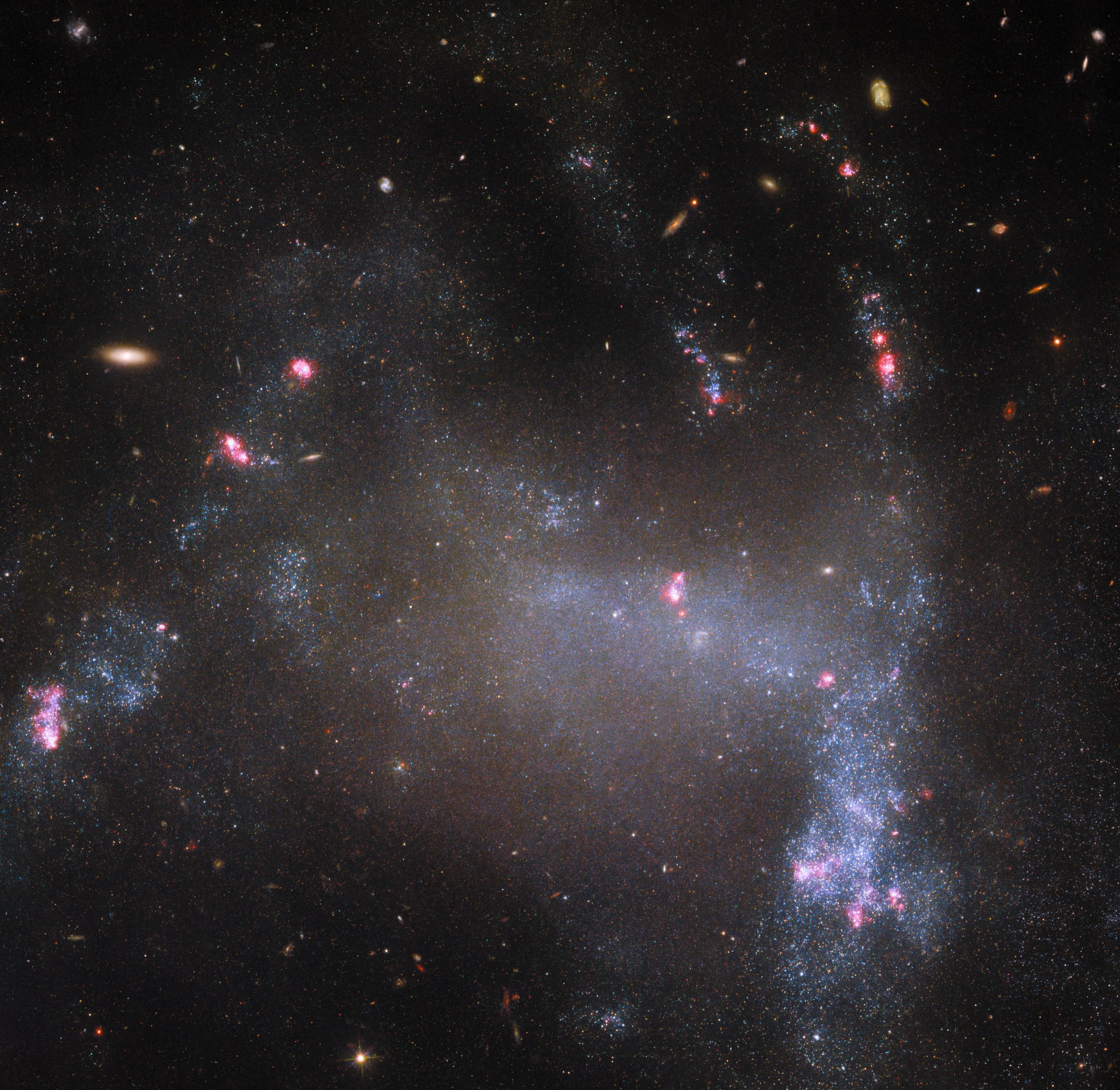This image from the NASA/ESA Hubble Space Telescope shows the gauzy-looking celestial body UGC 5829, an irregular galaxy that lies about 30 million light-years away. Despite the lack of observations of this relatively faint galaxy, UGC 5829 has a distinct and descriptive name: the Spider Galaxy. Perhaps its distorted galactic arms with their glowing, star-forming tips hint at the clawed legs of an arachnid.
The data in this image come from two Hubble observing programs. The first used Hubble’s Advanced Camera for Surveys to look at relatively nearby galaxies in an effort to build color versus brightness diagrams of the stars in these galaxies. Each observation only took one Hubble orbit (about 95 minutes) but provided a valuable archival record of the types of stars in different galaxies and therefore different environments.
The second program used Hubble’s Wide Field Camera 3 to look at star clusters in dwarf galaxies. Their observations leveraged Hubble’s ultraviolet capabilities along with its ability to see fine details to better understand the environment where stars form in dwarf galaxies. The star-forming regions of UGC 5829 are readily visible in this image as bright-pink nebulae or clouds.
Text credit: European Space Agency (ESA)
Media Contact:
Claire Andreoli
NASA's Goddard Space Flight Center, Greenbelt, MD
claire.andreoli@nasa.gov































